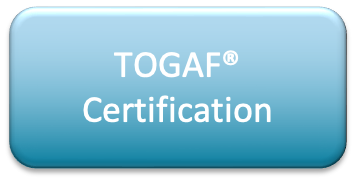Introduction
In the ever-evolving landscape of technology and business, Enterprise Architecture (EA) plays a pivotal role in ensuring organizations align their strategies, processes, and IT systems to achieve their goals. TOGAF (The Open Group Architecture Framework) has emerged as the de facto standard for implementing EA, offering a comprehensive framework and methodology. Mastering the art of Enterprise Architecture through TOGAF certification can provide professionals with the skills and knowledge necessary to excel in this field. In this blog, we will explore the significance of TOGAF certification and provide a comprehensive guide to help individuals embark on their journey to becoming certified TOGAF professionals.
Understanding Enterprise Architecture and TOGAF
Enterprise Architecture is the discipline of aligning business and IT strategies to optimize organizational performance. It provides a holistic view of an organization, encompassing its structure, processes, information systems, and technology infrastructure. TOGAF, developed by The Open Group, is a widely adopted framework that provides a structured approach to EA development and management. It offers a set of best practices, guidelines, and resources for architects to create and maintain effective architectures.
Benefits of TOGAF Certification
- Enhances Professional Credibility:
Obtaining TOGAF certification enhances the credibility of professionals in the field of Enterprise Architecture. It demonstrates their commitment to following industry best practices and their proficiency in applying the TOGAF framework.
- Expands Career Opportunities:
TOGAF certification opens doors to a wide range of career opportunities in both the public and private sectors. Many organizations recognize the value of TOGAF-certified professionals and actively seek individuals with this qualification for architectural roles.
- Promotes Effective Communication:
TOGAF provides a common language and set of concepts for architects to communicate effectively across different stakeholders. By mastering TOGAF, professionals can bridge the gap between business and IT, facilitating smoother collaboration and understanding.
- Enables Efficient Architecture Development:
TOGAF offers a systematic and structured approach to developing architectures. Certified professionals gain a deep understanding of the TOGAF methodology nu sprintzeal, enabling them to design and implement architectures efficiently, resulting in cost savings and improved operational effectiveness.
TOGAF Certification Levels
TOGAF certification is divided into two levels:
- TOGAF Foundation (Level 1):
The Foundation level provides a broad understanding of the basic principles and concepts of TOGAF. It covers the core elements of the framework and introduces key terminology, structure, and components.
- TOGAF Certified (Level 2):
The Certified level is the advanced level of TOGAF certification. It builds upon the foundational knowledge and focuses on the practical application of TOGAF concepts. It delves deeper into the methodology, techniques, and best practices for developing architectures using TOGAF.
Preparing for TOGAF Certification:
- Familiarize Yourself with TOGAF Documentation:
Start by acquiring the official TOGAF documentation, including the TOGAF Standard and the TOGAF Study Guide. Thoroughly study these resources to gain a comprehensive understanding of the framework’s concepts, structure, and methodology.
- Enroll in TOGAF Training Courses:
There are numerous TOGAF training courses available, both online and in-person. These courses provide structured learning programs, interactive sessions, and practice exams to help candidates grasp the principles and application of TOGAF effectively.
- Join Study Groups and Online Communities:
Engaging with study groups and online communities dedicated to TOGAF can be immensely beneficial. These platforms offer opportunities to connect with fellow candidates, share insights, ask questions, and gain valuable exam preparation tips.
- Practice with Sample Exams:
Practice exams play a crucial role in familiarizing yourself with the exam format and assessing your knowledge and readiness. There are several sample exams available online that mimic the actual TOGAF certification exam, enabling you to evaluate your progress and identify areas that require further focus.
Taking the TOGAF Certification Exam:
- Exam Structure:
The TOGAF certification exam consists of multiple-choice questions that test candidates’ understanding of the TOGAF framework and their ability to apply it to real-world scenarios. The Level 1 exam typically focuses on foundational knowledge, while the Level 2 exam emphasizes practical application and analysis.
- Exam Preparation Tips:
Review the TOGAF documentation thoroughly, paying close attention to the key concepts and techniques.
Practice time management during the exam, as it can be challenging to complete all the questions within the allocated time.
Read each question carefully, ensuring you understand the context and requirements before selecting your answer.
Apply critical thinking and consider practical scenarios when choosing the most appropriate solution.
Conclusion
Mastering the art of Enterprise Architecture through TOGAF certification provides professionals with a competitive edge in today’s dynamic business environment. By acquiring the knowledge, skills, and industry recognition that TOGAF certification offers, individuals can effectively contribute to the development and management of successful enterprise architectures. By following the comprehensive guide outlined in this blog, aspiring TOGAF professionals can embark on their certification journey confidently and unlock a world of exciting career opportunities in Enterprise Architecture.





